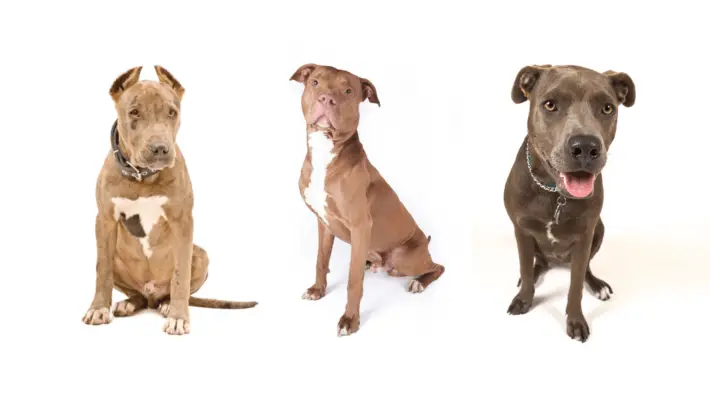The blue nose Pitbull, with its signature greyish-blue nose and coat, has grown in popularity as a family pet thanks to its loyal and affectionate temperament. However, like any dog, blue nose Pitbulls require proper socialization and training from an early age to minimize behavioral issues.
While generalizations can be made about the breed’s tendencies, it’s important to remember there can be significant variances across different bloodlines and individual dogs. Working closely with a professional trainer experienced with the breed can help owners thoroughly understand their dog’s unique personality and needs.
The Importance of Early Socialization

Experts recommend beginning structured obedience training between 10-12 weeks old. However, socialization to new people, pets, places, and experiences should start even earlier through positive exposure.
Early socialization helps build good manners, confidence, and behavioral habits immediately. It also prevents fearfulness or aggression later on. Be sure your puppy has received proper veterinary care before public socialization.
Positive Reinforcement Training
Reward-based training methods work exceptionally well for highly energetic and eager-to-please blue nose pitbulls. Follow these guidelines:
Use Rewards Like Treats, Toys and Praise
Have some enticing treats, a favorite squeaky toy, and enthusiastic verbal praise ready to reward desired behaviors. Promptly rewarding correct responses teaches the dog which behaviors earn rewards.

Give Clear and Consistent Commands
Use simple, one-word commands in a firm tone. Give the command once and wait for compliance before rewarding. Consistency from all family members eliminates confusion.
Keep Training Sessions Short but Frequent
Limit individual training sessions to 5-10 minutes but repeat them 2-3 times daily. Short, structured sessions prevent boredom and cognitive overload while maximizing progress.
Have Patience and Watch for Body Language
Remain calm and patient when training a blue nose pitbull. Learning takes repetition. Pay close attention to your dog’s body language for signs of stress like yawning or averted eyes. If needed, take a break and try again later.
Step-By-Step Instructions for Training Commands
Here are step-by-step instructions to teach foundational obedience cues to your blue nose pitbull:
Sit
- Hold a treat above and slightly behind the dog’s head.
- Slowly raise your hand so the dog’s nose follows the treat upwards. Their hindquarters will lower as they look up.
- Say “sit” when their bottom touches the ground, then give a treat and praise.
- Repeat this multiple times daily, adding the hand signal until the command is mastered.

Stay
- Have the dog sit.
- Say “stay,” take a few steps back, then return and reward if they held the position.
- Gradually increase distance over multiple sessions until you can walk around the room and return.
- Changing position from standing to sitting or down can make it more challenging.
Come
- Let the dog see you holding a treat.
- Take a few steps back while enthusiastically saying their name, followed by “Come!”
- Immediately reward them with treats and praise when they run directly to you.
- Build up distance and practice in environments with more distractions, like the park.
Leave It
- Hold a treat in your closed hand and let them sniff it.
- When they stop pawing or licking, say “leave it” and reward them with a different treat from your other hand.
- Once mastered, practice with food bowls, dropped food, toys, and other temptations.
Heel
- With the dog on a leash, say “heel” and start walking. Use treats to lure them into position at your side.
- Reward them by staying in position without pulling ahead.
- Use the “let’s go” cue to begin moving forward, stopping when they pull.
- Regularly change pace and direction during sessions.
Establishing a Consistent Training Schedule
Dogs thrive on routine. Establish specific times throughout the day for 5-10 minute training sessions. Ideal times are morning/evening walks, before feeding, and before playtime. Be consistent with your verbal commands and hand signals during these sessions. Over time, your blue nose pitbull will automatically follow commands.
Addressing Problem Behaviors
If your blue nose pitbull displays unwanted behaviors like jumping, nipping, or ignoring commands, do not yell or punish them. Instead, work with a professional trainer to identify the motivation behind the behavior and create a customized training plan. Reward-based methods paired with consistency are crucial to correcting issues.
Going Beyond Basic Obedience
While mastering basic commands is essential, training should not end there. Continue socializing your blue nose pitbull and enroll them in more advanced obedience classes. Consider canine sports like agility, dock diving, or nose work as fun outlets. Meeting their needs for physical exercise and mental stimulation will bring out the best in your well-trained pitbull.

